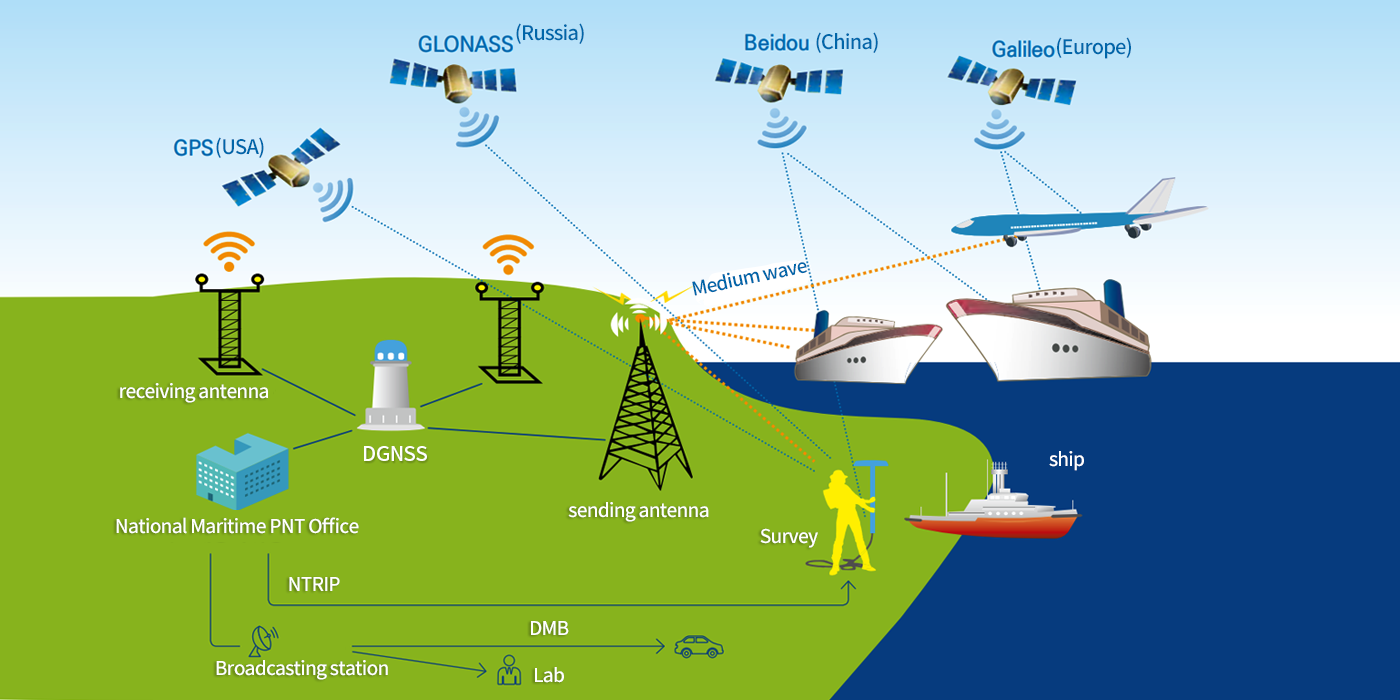Services
생활속의 위성항법, 보다 안전하게 제공하겠습니다!
Overview of DGNSS
Overview of DGNSS
Global navigation satellite system (GNSS) signals have various errors due to a range of factors affecting the signals until they reach a receiver on the ground. Using a differential global navigation satellite system (DGNSS) is one of the methods that can remove such errors. A DGNSS observes components of the errors in the GNSS through reference stations distributed throughout South Korea. It then generates correction information and broadcasts it to users. It can be implemented in positioning, speed, and time measurement regardless of the weather condition. It is utilized in a wide range of areas including navigation system, transportation, disaster, geography, surveying, agriculture, and forest management.

GPS위성신호를 통해 통합운영제어국,기준국,송신안테나 관측하여 정보를 생성하고 사용자에게 방송하는 기능을 수행
Basic Composition of DGNSS
- It consists of the Integrated Operation and Control Station (Okcheon), 17 reference stations (RS), and 17 integrity monitoring stations (IM) in order to ensure the safe operation of sailing vessels in narrow waters and entry/exit routes to ports and harbors, and to provide inland positioning services. The locations of RS and IM are also used as reference points for national satellites.
Integrated Operation and Control Station
- It monitors and controls the operation status of all DGNSS RS and IM in real time in South Korea. It also monitors and analyzes the real-time DGNSS usage status and sends warning messages to users.
Reference Station
- After receiving GNSS radio signals at an accurate location that it already knows, it calculates the error by comparing the measured distance with the known distance. It then broadcasts to users in real time through medium waves (283.5–325 kHz) in international standard format (RTCM SC-104).
Integrity Monitoring Station
- It constantly monitors RS signals at a location that is a certain distance away from the RS. It sends warning messages to the Integrated Operation and Control Station when the correction signals of the satellite error exceed the limit or show signs of abnormality.








